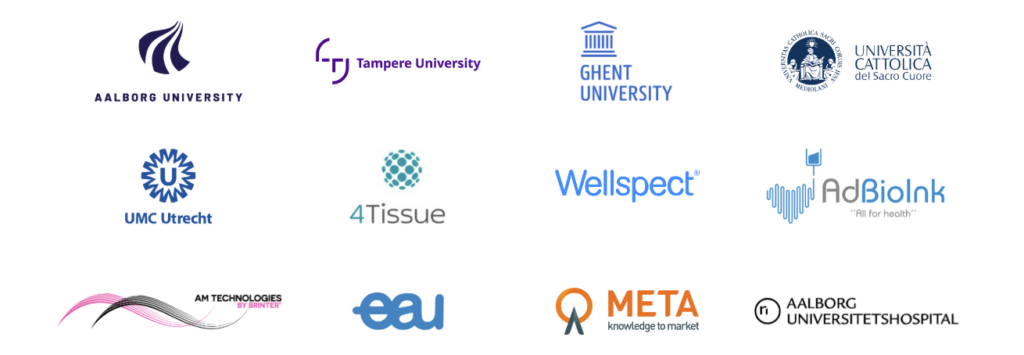Advancing Regenerative Medicine Through Innovation
Brinter AM is proud to be a key partner in the STRONG-UR project, which introduces a unique combination of novel manufacturing technologies and advanced biomaterials. This initiative is set to transform tissue reconstruction and make healthcare more accessible. With a primary focus on regenerative medicine, STRONG-UR is advancing the fabrication of tubular organs through pioneering bioprinting solutions.


The STRONG-UR bioprinting solution represents a unique combination of novel manufacturing technologies and biomaterials for regenerative medicine. It aims to create viable tissue constructs, particularly for the fabrication of tubular organs.
Revolutionizing tissue reconstruction with bioprinting

Focus on male urethra
STRONG-UR focuses on the treatment of male urethral strictures which affect a significant proportion of the male population.
With specifically designed 3D bioprinter components and biomaterials, the project seeks to make personalised, engineered tissue available for medical use.
A stricture is a narrowing in a tube-like passage in tubular organs such the esophagus, trachea, stomach, intestine, bladder and the urethra
A significant healthcare challenge
Addressing Male Urethral Strictures: A Global Healthcare Challenge
Male urethral strictures, a condition affecting approximately 0.6% of the male population, pose significant physical and psychological challenges, including:
- Obstructed urine flow
- Urinary retention
- Sexual dysfunction
- Bladder damage
- Kidney failure
The delicate structure of the male urethra, surrounded by highly vascularized spongious tissue, makes its repair particularly challenging. Current treatments face critical limitations, such as:
- Insufficient autologous tissue (patient-derived)
- Complications at tissue harvesting sites
- Lack of standardised approaches
- High treatment costs
Through advanced bioprinting technology, STRONG-UR aims to overcome these barriers by offering precise and personalised tissue reconstruction solutions.
The Role of Bioprinting in Tissue Engineering
The STRONG-UR consortium is leading advancements in 3D bioprinting technology, enabling the creation of tissue constructs with:

- Precise cell composition
- Customisable structure
- Controlled mechanical properties
Innovative Highlights:
- Dynamic hydrogel-based biomaterials that provide unparalleled control over tissue characteristics.
- Bioinks composed of living cells and hydrogels, transformed into intricate biological structures via advanced 3D techniques.
“By studying the structure of the human urethra, we aim to personalise tissue architecture and composition, paving the way for innovative treatment options.”
Pablo Pennisi, Associate Professor at Aalborg University & Project Coordinator
Brinter AM’s Commitment to Accessible Healthcare
At Brinter AM, we believe that innovation in bioprinting can reshape healthcare by providing scalable, cost-effective, and personalised solutions. Being part of the STRONG-UR consortium aligns with our mission to make advanced medical technologies accessible to patients worldwide.
We are committed to:
- Leveraging our patented technologies in multi-material and microfluidic printing.
- Supporting research that accelerates the delivery of bioprinted tissue solutions to clinical use.
- Collaborating with leading institutions to ensure quality, reproducibility, and accessibility.
A Strong Partnership for Global Innovation
The STRONG-UR project is powered by a consortium of 12 partners from six European countries and one associated member state, bringing together expertise from:
- Academic research
- Hospitals
- Industry leaders
This dynamic collaboration combines expertise in cell biology, biomaterials, 3D printing, and urology, setting new benchmarks in regenerative medicine.

Join Our Mission
We invite you to follow Brinter AM and the STRONG-UR project as we work towards revolutionizing healthcare through cutting-edge bioprinting solutions.


Funded by the European Union. Views and opinions expressed are however those of the author(s) only and do not necessarily reflect those of the European Union or HaDEA. Neither the European Union nor the granting authority can be held responsible for them.
